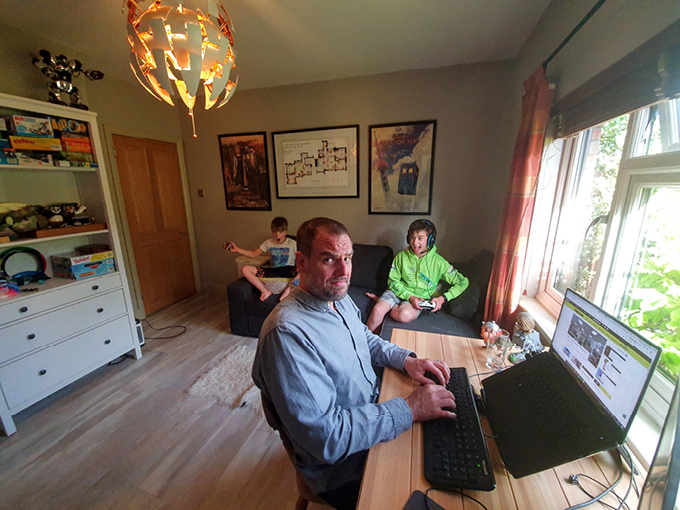By Maurice Wheeler
Over the last six weeks I have probably shared more of “the real me” with my colleagues and clients than I had over the previous six years. Through numerous Zoom calls, they have met my children and seen the inside of my often-untidy home office. They know the books I read, the board games I play and have critiqued my wall art. Some have even been on an impromptu guided tour as I wander my house trying to find a strong WiFi signal. In return, I have seen into their homes and met their kids, and I’ve literally seen their dirty laundry. That’s okay…as trite as it is, “we are all in this together.” As our inherent need to be spruce things up and apply a veneer to ourselves has diminished, the lockdown has allowed people to step out from behind their facades and be more raw in how we present themselves.
This reduction in the need to rely on affectations is something I see permeating all areas of our lives, and none more so that the children’s media industry. Up until now “high-quality production”—high-resolution video, high-quality audio, well shot in a controlled environment and perfectly edited, scored and graded—has been the barometer for good content. We know from research we conducted in January that parent’s valued high-quality production in the shows their children watch. They turned their noses up at their child watching unboxing compilations, streamers playing Fortnite, and toy play videos. It’s not just parents who wanted high-quality production, broadcasters and distributers would rarely buy or produce a show that could ever be considered “low quality.”
But the kids never really cared. In the same research across both the US and UK, the content that parents often gave the lowest quality scores, would get some of the highest ranks among kids for enjoyment and affinity. “High quality” was never something the children sought out—parents and broadcasters were driving the demand.
And, as with most things, the pandemic is forcing a sea change. In a webinar we hosted last month about the kids entertainment space, Yago Fandino, head of kids content for Spanish public broadcaster RTVE talked about how broadcasters and producers have gone through a massive shock with the lockdown. They can no longer produce the shows they want to in the same way that they always have, and so they have been forced to rethink what is actually important, asking themselves “what is the quality that the audience actually needs.”
TikTok, YouTube, Instagram, Twitch are all thriving and they show us that you can make highly creative and engaging content without all the “bells and whistles” that come with big budget TV productions. At their core, the content on these platforms isn’t trying to be anything more than it is. These user-generated videos don’t try to cover up blemishes with loads of polish. These shorts are just a truthful representation of an idea, sometimes badly executed, but they are riddled with integrity.
It could be that the lock down has enabled us to look beyond the veneer of polish to see the idea underneath. Content is being stripped back to the basics, and what we are left with is more honest and authentic and therefore more accessible and relatable—the holy grail of kid’s content. What quality means today is fundamentally different from what it meant three months ago.
Ironically, it’s taken a quarantine to enable us to be much happier about removing our masks.
Maurice Wheeler is managing director at We Are Family, which helps clients at all stages of their marketing journey, from initial product development and consumer research all the way to locally executing their marketing and retail campaigns. For more than 20 years Wheeler has developed audience-led strategies that have helped clients, including Nickelodeon, BBC, Disney, Microsoft, Google, Universal Music, Unilever and Lego.






















